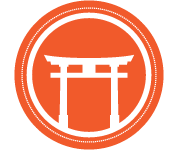This month, we’re very excited to announce our plans for autumn 2021. In addition to a full class schedule for members, free weekly trial classes for prospective students, and a new soto deshi program, we also have some exciting instructor updates, promotions, and…wait for it…our 10-year anniversary.
Writer’s Block Copout: A Photo Gallery
This is the 19th consecutive issue of In the Dojo since its revival in December 2019. Now, I’m out of ideas! I have complete and total writer’s block. So, instead of an article, I offer you some of my favorite pictures from the first half of 2021. You’ll recall, we began the year with masked, socially distanced practice. And then we got vaccinated! Let’s hope we can maintain our trend towards a better normal. In the meantime, if these pictures inspire a feeling that you missed out, it’s because you did
Don't Return to Normal; Do Something Better
As we rush to reestablish routines, reopen businesses, and reunite with friends and family, it is understandably easy to forget that prepandemic normalcy was frequently a morass of mediocrity. Compared to the trauma of the last 15 months, mediocrity might be appealing. However, let’s remember that prepandemic life was often characterized by chronic work-life imbalances that interfered with, among other things, aikido, as well as ambient anxiety and stress, rushing, noise, and malaise. As we reopen, reestablish, and recommit, we have an opportunity to not merely return to normal, but to actually create something better.
Women in Martial Arts
In this month’s issue of In the Dojo, we pleased to feature an article about gender equality in aikido by AOSB co-founder Courtney Paul. This piece was originally submitted to the Aikido World Alliance’s Technical Committee in 2017 as part of Courtney’s nidan application. The issues and questions Courtney raises remain relevant today, especially as dojo’s reopen and there is the opportunity to do something better than merely returning to pre-pandemic normalcy.
An Interview with Josh Paul Sensei
In this issue of In the Dojo, we invited 5th kyu student Anna Gibertini to interview Josh Paul Sensei, AOSB’s cofounder and dojo-cho. For over 20 years, Paul Sensei’s aikido practice has evolved from simply a means to get some exercise, to a lifelong dedication, and finally into a family-run business. Here, Paul Sensei shares his aikido history, as well as his thoughts on how this traditional art is faring in the digital present.
Introductions!
An Interview with Stephanie Flores Sensei
“It’s challenging to give yourself over as a new student and to just trust your instructor, and to see that if I turn this way, or if I shift or move that way, that that's actually going to make a difference in the technique or what happens to the person I'm dealing with. Until you have that level of trust, learning can be difficult.”
Aikido as Meditation
Meditation and aikido, as well as other martial arts, have a long, intertwined history. My first aikido teacher, Joseph Jarman sensei, was a Zen Buddhist priest, and regularly led zazen (seated meditation) and kinhin (walking meditation) sessions after class. Aikido and meditation may be practiced independently or as complements to one another. Or one can pursue aikido as a form of meditation unto itself.
The Aikido Dojo: Stability and Sanctuary
Our dojo—not just the physical space, but also aikido and its community of practitioners—has persevered. We hosted a seminar in February. We had promotions, including two black belt promotions, and we continued to train and progress in the art. We reopened for in-person classes after a six-month closure, and we are ending the year with a five-day-per-week class schedule.
Shuhari: Stages of Learning
Shugyo: Overcoming, Persevering
Brooklyn Aikido Dojo Survives Quarantine
Brooklyn Aikido Dojo Reopens
AOSB in Solidarity and Generosity
Movement Within Stillness
COVID-19 Status Update
Aikido at Home
In the wake of the COVID-19 pandemic, many classes and activities ranging from individual instrument lessons, to sing-a- longs, drag queen story times, yoga and dance classes, etc., have begun delivering their services online. These pursuits lend themselves to individual, solo viewing and practice. Aikido, however, is unique. It is intentionally designed to be practiced with other people.
The Aikido Dojo
The word dojo literally means “the place of the way.” A dojo is a unique space dedicated to the pursuit of learning, meditation, and personal improvement and growth. The dojo is a brick and mortar establishment as much as it is an idea. Any place “the way” is practiced could be a dojo. A dojo does not have to be defined by its architecture or interior decor. A dojo is mostly defined by the people who gather and practice there.



















